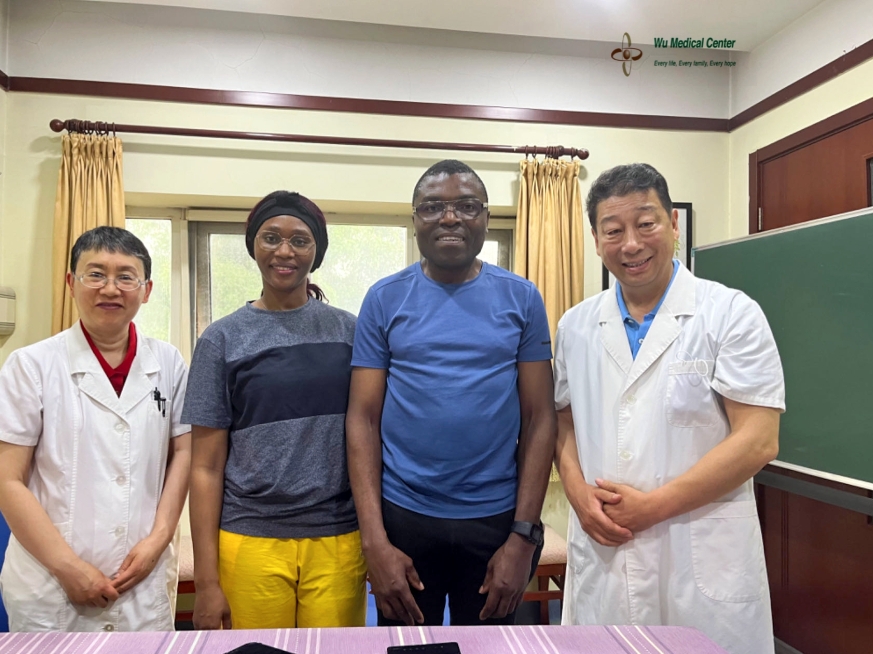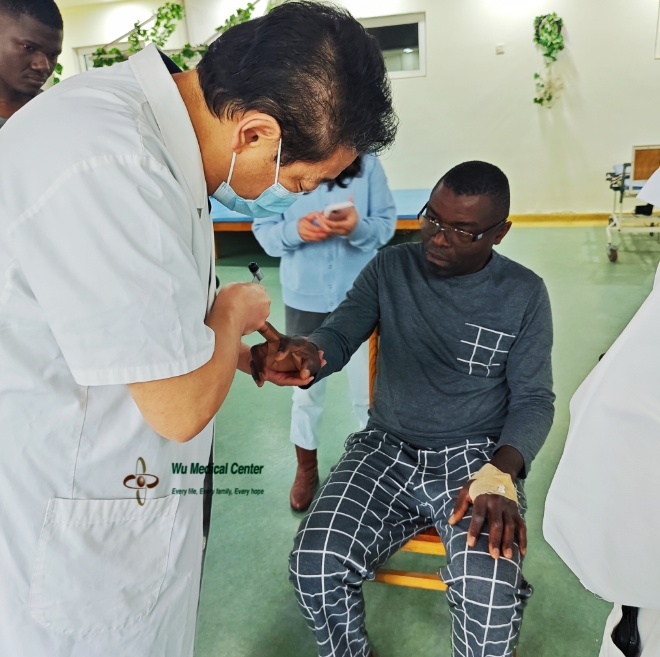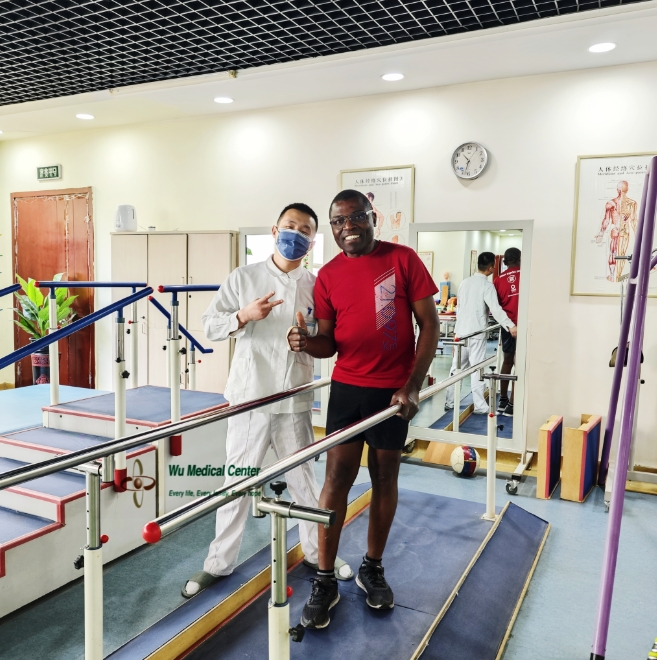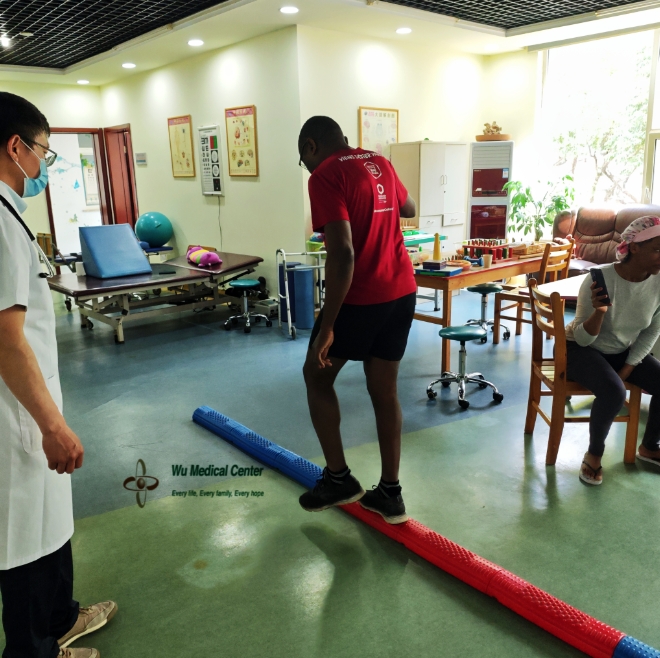Amour Kieyela-Amyotrophic lateral sclerosis (ALS)-(French)
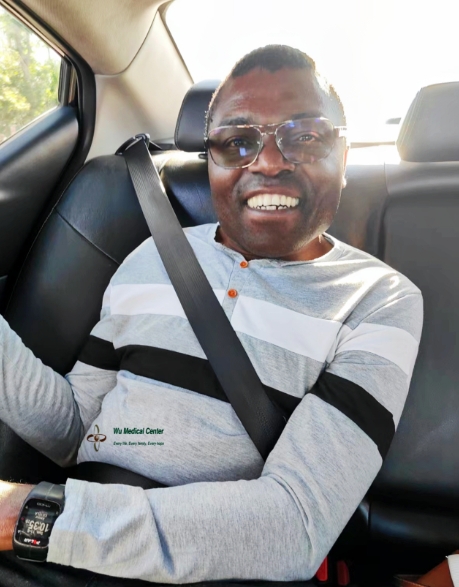 Patient's name: Amour Kieyela
Patient's name: Amour Kieyela
Gender: Male
Age: 50 years old
Nationality: French
Diagnosis: Amyotrophic lateral sclerosis (ALS)
Admission status:
The patient had gradually developed weakness in his right lower limb while running for one and a half years ago, and subsequently experienced difficulties in balance and speech. He was diagnosed with "amyotrophic lateral sclerosis" at a local hospital and was prescribed "riluzole and vitamin E" for treatment, but there was no significant effect. His disease has progressed continuously. Currently, all four limbs of the patient have sustained muscle weakness, although he could slowly raise his hands above his head, walk slowly, often needed help to stand from a sitting position, his movement speed and endurance were significantly reduced. His speech was slurred and unclear without choking, he denied any other chronic illnesses, had no infectious history, no history of medication or food allergies.
Admission examination:
The patient's pulse was 55 beats per minute, his respiration was 18 breaths per minute, his blood pressure was 132/81 mmHg, and his blood oxygen saturation was 94%. He was developmentally normal and had an average nutritional status. His lips were not cyanotic and there was no redness or swelling in his pharynx. His chest movement during respiration was slightly weak, and both lower lungs had clear respiratory sounds without obvious dry or moist rales. His heartbeat was strong and regular, without any obvious murmurs. His abdomen was flat and soft, and his liver and spleen were not palpable. There was no edema in his lower limbs.
Neurological examination:
The patient had clear mind and his mental status was normal. He had unclear articulation and difficulty in pronunciation. His calculation, memory, and orientation were all normal. His pupils were 3mm in diameter and respond well to light. His eye movements were flexible in all directions. The symmetry of the nasolabial and forehead wrinkles was normal, as was the extension of the tongue, but there was obvious atrophy of the tongue muscle, with decreased movement and weak ability to blowing cheeks together. His chewing was still possible, and there was no choking when drinking water. His bilateral soft palate lift was also normal, and the epiglottis was centered. His neck rotation and shrug strength were grade 4, and his upper limb strength was grade 4-. His fingers on both hands could reach the nose. Both his index fingers on both hands could also be matched up against each other but could not engage the smallest fingers. He demonstrates awkward manual coordination. His lower limb strength was also grade 4-. When he walked, there was noticeable foot dragging and he was able to stand on his own but not on one leg. His gait was significantly reduced in length and speed. He had poor endurance during exercise. His heel-knee-thigh test was also poorly completed. He had slight muscle atrophy in all four limbs and had muscle twitches, and his lower limbs had a mild increase in muscle tone. His limbs sensations were normal, and his tendon reflexes were active. Both sides of his Hoffmann and Babinski tests were positive. His posturography was negative, and his meningeal irritation sign was also negative.
Treatment process:
The patient was admitted with a clear diagnosis of "amyotrophic lateral sclerosis" (ALS). During his hospital stay, he received neural stem cell therapy to repair motor nerve damage, mesenchymal stem cell therapy for nutritional, endocrine, and immune support, and adjuvant medication such as edaravone, riluzole, and neurotrophic factors. He also received comprehensive rehabilitation treatment.
After treatment:
The patient's motor function has improved significantly. His speech is clearer and his speech speed has increased compared to when he was admitted. His muscle atrophy of the tongue has improved, and his tongue muscle volume has increased and his movement strength has increased. His upper limb strength has increased, with enhanced lifting strength and improved speed and flexibility. He is able to complete both the finger pointing test and the alternating test with obvious improvement in performance. His core and abdominal muscle strength has increased, leading to a faster speed of getting up and sitting up. His lower limb strength has also increased, and he can now stand on one foot for about 5-10 seconds. His reaction time and agility have significantly improved during passing training, and he can also perform backward walking and correct his position with both legs. His ability to complete the heel-to-knee test has improved compared to before. His walking speed has increased and his flexibility has improved. His energy, physical stamina, and exercise endurance have all significantly improved.
